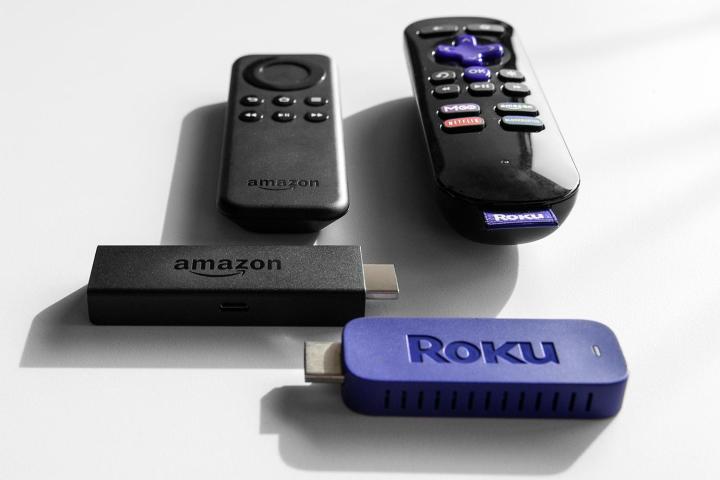
But, as is often the case, the specs don’t tell the whole story. Does a streaming HDMI dongle really need a dual-core processor or an entire gigabyte of RAM to do its job well? According to our experience, the answer is: not necessarily. Most basic TV-watching functions do just fine on more meager hardware, as evidenced by the Roku Streaming Stick’s solid performance in key areas. Fold gaming into the mix, though, and it’s an entirely different story.
In our video, we illustrate the key differences between the Amazon Fire TV Stick and the Roku Streaming Stick, then pit the two against each other to assess app loading time, content loading times, response to user input, and overall user experience. As you’ll see, there is no clear-cut winner. The question, as it turns out, isn’t which streaming stick is best, it is which streaming stick is best for you.
If you like the idea of playing games with a console-style feel, or you are heavily invested in Amazon’s Prime universe, then the Fire TV stick is the best pick. But if you want access to the most apps, a search feature that polls multiple services for the stuff you want to watch, and a user-friendly interface that’s easy to love, then the Roku Steaming Stick is your best bet. Either way, know this: The streaming HDMI stick offers an experience that approaches that of a fully-fledged set-top box, but at a fraction of the price. And if tech history is anything to go by, it will only get better from here.
Editors' Recommendations
- You can now make your own AI art with Amazon Fire TV
- Amazon is giving you 6 months of MGM+ when you buy a new Fire TV
- New Amazon Fire TV Omni QLED displays art, senses your presence
- Is new Fire TV hardware on the way at Amazon’s fall event?
- YouTube TV now available in 5.1 surround sound on Amazon Fire TV devices



